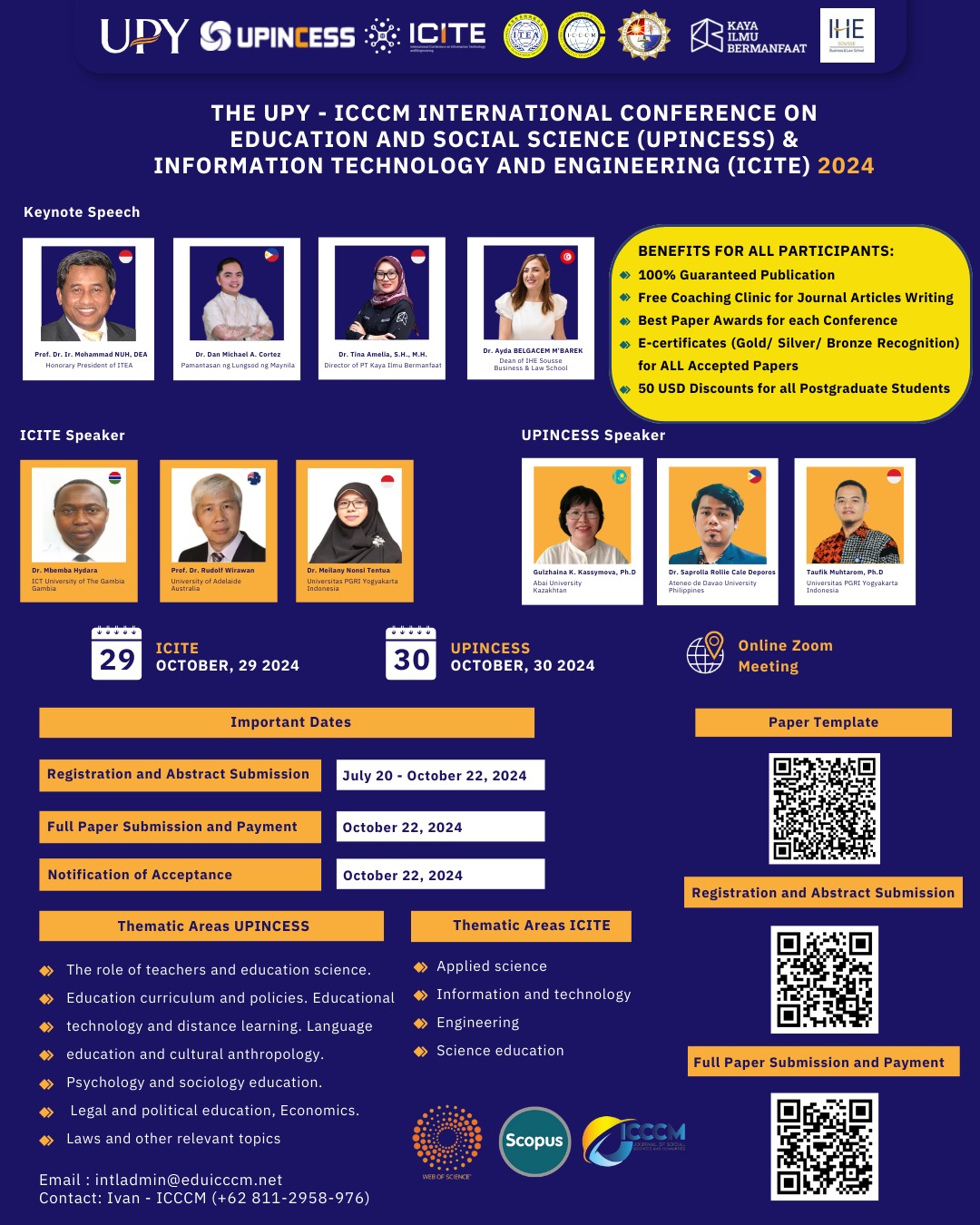Prevention Stunting Through Supplementary Feeding and Community Education in Temulus Village
DOI:
https://doi.org/10.53797/icccmjssh.v1i6.11.2022Keywords:
Stunting, Socialization, ChildrenAbstract
Stunting is a condition where a person has a different condition, this condition occurs due to unmet nutrition in a person. Stunting is experienced by pregnant women, nursing mothers and children aged 0-2 years. Stunting experiences delays and a decrease in body functions that are dangerous for a person, following from this, researchers conducted activities for families who had someone indicated to be affected by stunting with stunting socialization education which was carried out door to door. These activities have the result that many people are unfamiliar with stunting and lack of early preparation in preventing stunting, it is hoped that the activities carried out by researchers can reduce stunting conditions in the Temulus Village community.
Downloads
References
Admasari, Y. (2022). Knowledge and Attitudes of Young Women about the First 1000 Days of Life (HPK) in Stunting Prevention. Journal of Global Research in Public Health, 7(2), 142-147. http://dx.doi.org/10.30994/jgrph.v7i2.398
Ali, A. (2021). Current status of malnutrition and stunting in Pakistani children: what needs to be done?. Journal of the American College of Nutrition, 40(2), 180-192.
Andriani, W. O. S., Rezal, F., & Nurzalmariah, W. O. S. (2017). Perbedaan pengetahuan, sikap, dan motivasi ibu sesudah diberikan program mother smart grounding (msg) dalam pencegahan stunting di wilayah kerja puskesmas puuwatu kota kendari tahun 2017 (Doctoral dissertation, Haluoleo University).
De Onis, M., Blossner, M., & World Health Organization. (1997). WHO global database on child growth and malnutrition(No. WHO/NUT/97.4). World Health Organization.
Morewitz, S. J. (2006). Chronic diseases and health care: new trends in diabetes, arthritis, osteoporosis, fibromyalgia, low back pain, cardiovascular disease, and cancer. Springer Science & Business Media.
Satriawan, E. (2018). Strategi Nasional Percepatan Pencegahan Stunting 2018-2024 (National Strategy for Accelerating Stunting Prevention 2018-2024). Tim Nasional Percepatan Penanggulangan Kemiskinan (TNP2K) Sekretariat Wakil
Sirajuddin, S., Rauf, S., & Nursalim, N. (2020). Asupan Zat Besi Berkorelasi Dengan Kejadian Stunting Balita Di Kecamatan Maros Baru. Gizi Indonesia, 43(2), 109-118.
Torlesse, H., Cronin, A. A., Sebayang, S. K., & Nandy, R. (2016). Determinants of stunting in Indonesian children: evidence from a cross-sectional survey indicate a prominent role for the water, sanitation and hygiene sector in stunting reduction. BMC public health, 16, 1-11.
Turck, D., Michaelsen, K. F., Shamir, R., Braegger, C., Campoy, C., Colomb, V., ... & van Goudoever, J. (2013). World health organization 2006 child growth standards and 2007 growth reference charts: a discussion paper by the committee on nutrition of the European society for pediatric gastroenterology, hepatology, and nutrition. Journal of pediatric gastroenterology and nutrition, 57(2), 258-264.
Vitolo, M. R., Gama, C. M., Bortolini, G. A., Campagnolo, P. D., & Drachler, M. D. L. (2008). Some risk factors associated with overweight, stunting and wasting among children under 5 years old. Jornal de pediatria, 84, 251-257.
Downloads
Published
How to Cite
Issue
Section
License
Copyright (c) 2022 Dwi Erwin Saputra, Shagna Putri Permata Hati, Mega Septiana, Naila Rizki Salisa

This work is licensed under a Creative Commons Attribution-NonCommercial-ShareAlike 4.0 International License.




